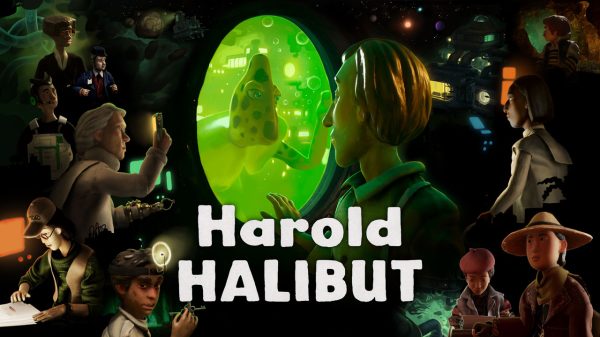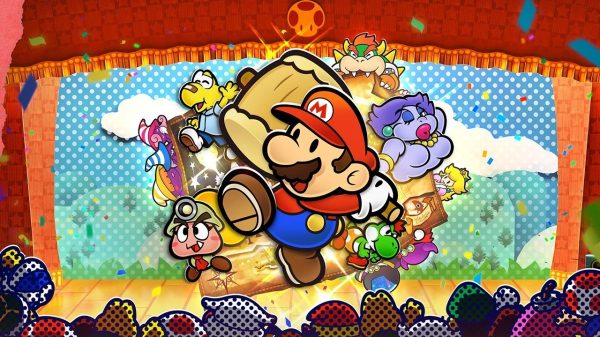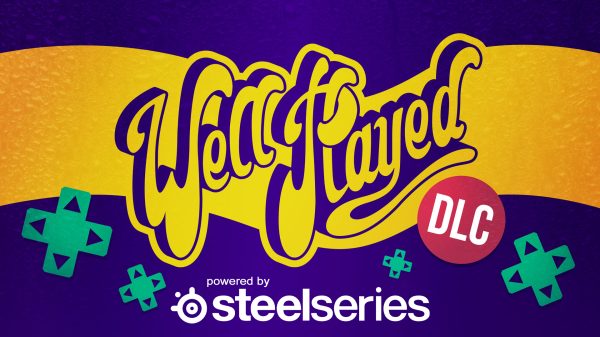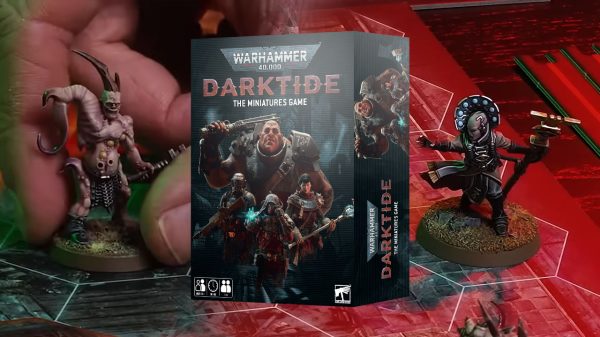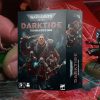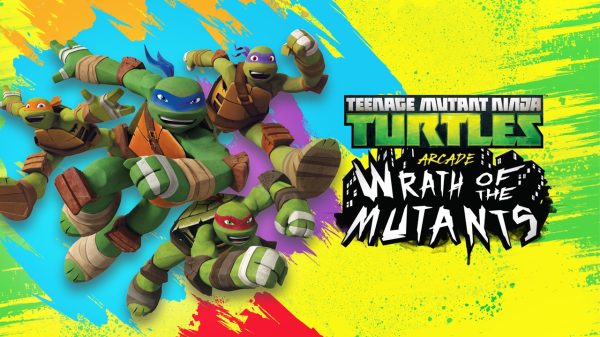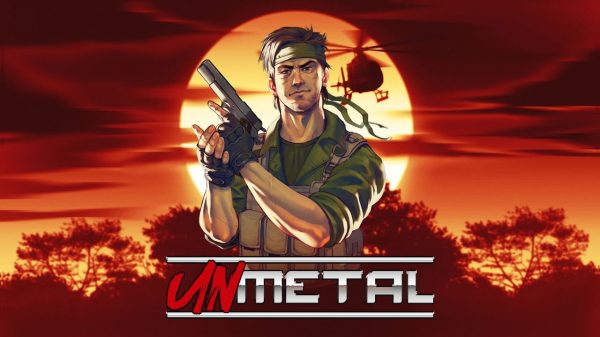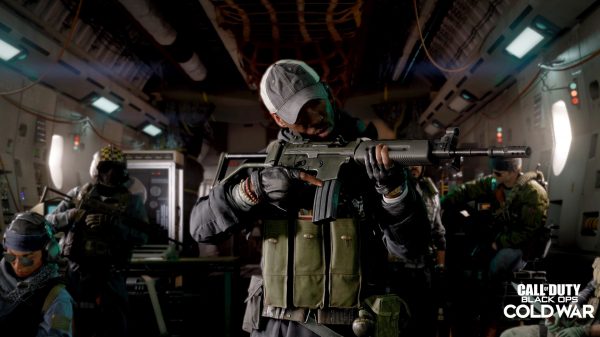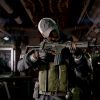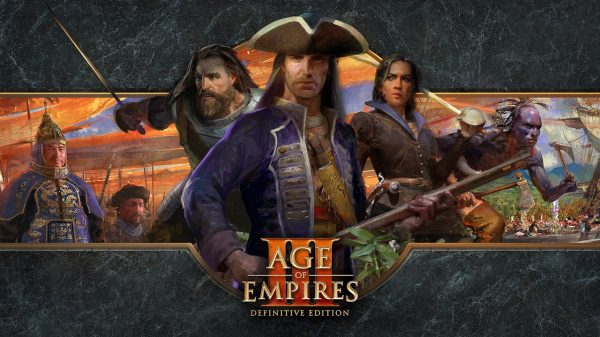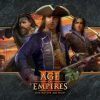Red and Blue. Video games are no stranger to these colours. Your allies are blue. Your enemies are red. After all, it’s a medium built during a time when these colours meant more than what team you were on. In the late 20th century, whether you were ‘red’ or ‘blue’ determined how you thought entire countries should be run. ‘Red’ or ‘blue’ was your worldview, your political allegiance, your entire life. The world was caught in a theoretical stalemate, between ‘red’ or ‘blue’: Communist totalitarianism, and Capitalist individualism. It was known as the Cold War, and it thankfully came to an abrupt halt in the transition between the 1980s and 1990s.
Since then, video games have exploded into what can’t be called a mere phenomenon anymore. It’s the most profitable entertainment industry of all time, and there’s not a single person in the Western world under 35 that has never played a video game. But sometimes, games harken back to that period of paranoia and end up becoming some damn fine titles in the process. As a dude who simply adores studying modern history, the zeitgeist of the Cold War has inspired some of my favourite games. As such, I’m proud to present these Cold War video games as the best of their kind. Quick warning: Genres will not be fairly represented.

Westwood Studios – 1996
This is absolutely the most famous Cold War game, but it’s technically not even a Cold War game. If Nazi Germany had never existed, as Red Alert’s scenario proposes, then Western Europe and the Soviet Union would never have been allies during the Second World War. If they’d never been “chums” in huge quotation marks, the underlying post-war tensions would never have existed. These tensions are paramount to the Cold War period, so—wait, where are you going?
Red Alert is the shit, even more than 20 years later. The influence it exerts over the RTS genre and the hearts of gamers is huge. If you played on a PC in the 90s, you played Red Alert. If you played an RTS after 1996, you played an RTS that borrowed heavily from Command and Conquer. The almost-perfect balance between Red Alert’s factions wouldn’t be beaten until Starcraft in 1998.
The online play almost definitely forms many gamers’ best memories with Dial-Up, and several shouting matches with phone-using siblings. The single-player is remembered less amongst the general gaming public, much less the (wonderfully) awful cutscenes, but is still an integral piece of the alternate history puzzle that Red Alert crafts.
In the game’s story, Adolf Hitler is removed from time after Albert Einstein invents a time machine to prevent the Second World War. However, doing so has led to the rise of an even more brutal regime: The Soviet Union. Stalin’s dreams of expansion are realised when the USSR invades Europe in the early 1950s, and Red Alert begins.
The pieces of this puzzle fall together so beautifully that it’d look like a flash in the pan to the untrained eye. Red Alert’s art direction emulates the low-budget American science-fiction of the 1950s, right down to the cutscenes. That acting was bad on purpose, dammit, and you will never tell me otherwise. You even fight giant ants in a secret mission from its 1997 expansion, Counterstrike, a-la 1954’s Them!
Frank Klepacki’s soundtrack, which is my absolute favourite, treads a fine line between the electro-tastic vibes of 90s video games and the spooky film scores of 50s sci-fi while doing a handstand and frost-tipping your hair. The sound design perfectly complements the soundtrack, and each sound effect fits its source to a T; you never forget the Tesla Coil’s harsh zap.
The gameplay remains solid, even to this day. I play through the campaigns every couple of years, and it never gets old. Westwood may be dead (thanks EA), but its legacy lives on.
Original copies of Red Alert are literally impossible to play on modern computers, but OpenRA is a fan-made remaster of Red Alert and other Westwood RTS titles. The online play is fully functional too, and is completely free! This isn’t a paid plug, but I sure hope it was.

IO Interactive – 2003
At the end of the Second World War, the United States and the Soviet Union emerged as the world’s strongest nations. But in the immediate post-war period, the US held a clear advantage. After all, they had The Bomb, a much stronger economy, and a foothold in every post-war European market.
It would take nearly a decade before the Soviets developed nuclear weapons of their own, and they would never match the US in GDP. Freedom Fighters depicts a switcheroo: The Soviet Union has the nukes, and is the dominant global superpower for the rest of the 20th century.
The game begins in the early 2000s, with the Soviet invasion of the United States. You play as a plumber who must start killing the Red Army as they annex New York. Put simply, he went from cleaning up shit to cleaning up shit.
What set the game apart at the time was its really-still-quite-good AI. Enemies behaved in ways that were more realistic than any other game at the time, and your squadmates were no slouches either. The realistic AI didn’t stop the game from indulging in some cheese every now and again, though.
The voice acting, for example, has some of the most wonderfully awful accents you’ll ever hear. You may even recognise one as Nicolas Worth, who also plays an antagonist in Command and Conquer: Red Alert 2 and its expansion – another ‘Soviets invade America’ game. I just thought that was a nice coincidence. Cutscenes are Soviet-controlled news broadcasts that are still very much American, with all the dramatic transitions and yuppie haircuts.
Even the soundtrack is over-the-top. Russian. Choirs. Everywhere. It’s a bomb-arse soundtrack, winning an award from Gamespot back in the day, but it doesn’t pull any punches.
Time has not been kind to the gameplay, but those familiar with old-school third-person shooters will still have a blast – especially with multiplayer. The entire game is excellently executed…but it’s unfortunately short. You’ll polish off the game in just under six hours at its ‘normal’ difficulty.
The visuals are understandably dated, but that’s part of the charm! There’s nothing comfier than an early 2000s shooter.
Finding a (legal) copy of Freedom Fighters for PC is next to impossible, unfortunately. The game also has Playstation 2, Gamecube and Xbox versions.

Kojima Productions – 2004
What a thrill…
I once described the Metal Gear Solid series as a superhero saga for geopolitics nerds. Nowhere is this more prevalent than the fourth game in the series (The Twin Snakes beats it by eight months), Snake Eater.
Set in 1964, the game wrestles with concepts that are central to the philosophy of the Cold War. Nuclear proliferation, ideological allegiance, double-crossing, perfecting rock-paper-scissors, all the important stuff. Americans and Russians alike are featured in the game’s cast of almost-insane characters, who fit the zeitgeist of their respective Cold War cultures perfectly.
Placed firmly in the ‘secret history’ that the series is known for, Snake Eater uses the post-Cuban Missile Crisis real world as the backdrop for its anti-war message. This setting is what truly sets Snake Eater apart from other Metal Gear games.
The gameplay is nearly identical, but this isn’t a detriment. Metal Gear Solid is the best stealth you’ll get this side of Thief. The writing is drenched in Arms Race hyperbole, but with a James Bond-like confidence that betrays its straight-faced fascade. That could be said for the entire game, from its characters to its setpieces. Even the excellent score is filled to the brim with Bond sensibilities, the iconic main theme being particularly guilty.
However, this ‘Bond bravado’ serves to highlight the inherent absurdities of the characters’ worldviews. Volgin’s Brezhnev-like hunger for power, Snake’s struggle with his own patriotism, Revolver Ocelot’s path to becoming the coolest dude in history, you get the idea.
Really, I could wax lyrical about this magnificent game for ages. Alas, that’ll have to wait. In the meantime, join me in pretending that Metal Gear Solid 4 doesn’t exist.
Playing Snake Eater is simple enough. Original versions of the game demand a high price, but a physical copy of the HD remaster for the Xbox 360 and Playstation 3 is easy to find.

Introversion Software – 2006
You know what I like? Nuclear war scenarios. The tension, the absolute devastation, the grim realisation when the bombs drop, the helplessness of the everyman. Games like the previously mentioned Freedom Fighters depict the everyman as the hero we need, but in a nuclear war your average Joe can do absolutely nothing. They can get vapourised in nuclear fire and not much else.
Nuclear war is (still) almost impossible – thank God – but the very possibility is so frightening that it formed a major part of the Cold War zeitgeist. DEFCON captures that sense of apocalyptic dread, while also being a damn fine multiplayer game.
DEFCON – named after the US military’s readiness system – is a very slow multiplayer RTS where five players control a continent’s nuclear stockpile in an inevitable nuclear war. The game is set in stages, each based upon the real life DEFCON readiness levels.
DEFCON 5 lets you place defences, air forces, and naval fleets, DEFCON 4 is when light scouting occurs, DEFCON 3 and 2 has fleets and squadrons engage, and DEFCON 1 is when the nuclear magic happens. When the missiles launch, it’s one of gaming’s most unique sights: Warning systems alert you to every missile launch, their slow trails creeping towards your population centres.
When a player launches their first strike, it’s announced in giant text at the bottom complete with a shrill siren. When your cities are hit, you’re given an estimation of the dead. These deaths are also how the game’s score is calculated. The player who ‘wins’ DEFCON is the one who loses the least.
And that’s the underlying ‘message’ of DEFCON. It manages to project the horrors of global thermonuclear war, without resorting to dialogue or even realistic visuals. The game is heavily inspired by the 1983 film Wargames (which is a fantastic film that I could waffle on about for hours), and the visuals are where this inspiration shines the brightest.
The soundtrack is minimal, melancholy, and fits the tone of the game perfectly. The only winning move is not to play, but DEFCON is a game you’ll be glad you lost.
You can buy the game on Steam and GOG, including its buggy-but-still-fun VR version. Physical copies exist, but they’re hard to find.

Massive Entertainment – 2007
Invading the United States in video games is such a staple of modern video games that it’s become as numbing for us as it was for English readers of ‘invasion literature’ in the late 19th century. But 2007 was a different time.
Spec Ops: The Line blew open the lid of the modern military shooter and exposed it for the tripe that it was, just as The War of the Worlds blew open the lid of vapid books about strong-jawed Englishmen defending ol’ Blighty against whatever enemy her empire faced that month.
2007 was the year of Super Mario Galaxy, Portal, Team Fortress 2, and Halo 3. It was a simpler time, a happier time; a time where World in Conflict sprouted to life as the best “America-gets-invaded” game of all time.
World in Conflict is an RTS set in a 1989 where the Soviet Union, desperate to extend its lifespan into the 21st century, launches a conventional invasion of Europe. How does it invade America? By being super sneaky, and hiding their beachhead forces in shipping containers. I mean, it was 2007. This kind of premise flew back then.
The single-player is what sets it apart from other late-Cold War games like Wargame, but it’s still nothing to write home about. It’s like Michael Bay (straight out of writing The Rock) and Tom Clancy in his heyday made a strategy game: Some cool set pieces, relatable characters on both sides, and a flag-waving premise, but an otherwise forgettable underlying story in hindsight.
The multiplayer, however, is what sets World in Conflict up as an unforgettable title. There are none of the conventional RTS rules, instead focusing on its combat and team play. Units are created by cashing in ‘Reinforcement Points’, with no base-building whatsoever. When you lose a unit, you’ll get those points back.
But you’ll get them back real slow. So if you lose a pretty decisive battle, you’d best pray that you took a great deal of territory. However, the length of games makes these devastating losses non-conclusive. I’ve come back from losses like that, and turned the game around using the support options. Hoo boy, does it feel good calling down a tactical warhead.
In-game objectives are capturing and holding Command Points – a-la Company of Heroes – until one team has enough points to own that piece of dirt. The combat is the tightest you’ll ever play in an RTS. There are so many micromanagement options that it’s honestly intimidating at first, but intuitive as hell once you get the hang of it.
Each multiplayer game is completely unique, and that’s something that not a lot of RTS games can boast – even today. 2007 was a great year for video games, arguably one of the best. World in Conflict is but the final cut in that year’s cake. So delicious and moist.
Unfortunately, World in Conflict’s online is now fully handled by a third-party service after Ubisoft deactivated its servers. You can still buy the game on GOG, but Ubisoft is handing it out for free until the 11th of December! [This promotion has since ended.]

Lucas Pope – 2013
All these other games we’ve talked about share one similarity that crosses genres: they’re all from the Western perspective. That’s a given considering we happen to be Western capitalist pig dogs ourselves, but there are unfortunately very few games that show the real Soviet Union.
Red Alert and World in Conflict do portray certain aspects, but none truly capture the soulless monotony of life in your Khrushchyovka apartment block. Papers, Please nails it, and manages to be a fantastic game to boot.
You play as that poor sap behind the desk at a border checkpoint, who was congratulated for winning a labour lottery by being forcibly relocated with his family to his new job. That’s pretty Communist.
The border you’re sitting on just so happens to be almost identical to the Berlin Wall, after your country (Arstotzka) and another country (Kolechia) had a war. Nobody explains how or why. That’s pretty Communist.
The game’s colour palette is dark colours and dull greys, with no music to accompany gameplay. The task you’re performing – receiving identification papers and checking them for legitimacy – is samey and boring in real life. Your meagre paycheck is barely enough to keep your family fed and warm. Officials breathe down your neck, and find any reason to fire or jail you. That’s pretty Communist.
In Papers, Please, though, these aspects are exceptionally rewarding to play. Documents often contain errors that can only be discovered through flipping through books and yet more paperwork. Finding these errors and rejecting people passage to Arstotzka is a “yeah boi” moment, especially when the people will simply slink out of your booth without a word.
But sometimes, they argue. They plead. They beg. Here, it becomes a little more difficult. When a man successfully enters Arstotzka but his wife’s passport is expired, what do you do? Your pay is docked for every mistake you make. Your son is sick and needs medicine. If your family dies, you lose the game. Do you prioritise your family and your playthrough, or this woman you’ve never met?
Moments like these are key to Papers, Please as a game about Communism. There’s no greater tool for keeping a population under control than giving them a job. The Soviets understood this, and made obedience good for people and their families.
Papers, Please makes obedience to Arstotzka good for you as a player. You’ll find yourself growing numb to the begging masses yearning for a new beginning in a new country. You’ll see a mistake, stamp “DENIED” on their documents, and call for security when they don’t leave.
Non-obedience can also be good for your playthrough as well, with 20 endings in the game. But where do these other endings start? When can you safely slip information to terrorists? What will happen if you don’t have that correct money? Now, being forced into obedience by fear of detriment to yourself? That’s pretty damn Communist.
Best not to think about that, Comrade Inspector. Keep your head down. Do your job, and your family will be safe. Glory to Arstotzka.
You can buy Papers, Please on Steam, but purchasing it on GOG gets you a DRM-free version. There’s an iOS version, too. There’s also a live-action short film coming that looks pretty sweet.
Arana blames her stunted social skills and her general uselessness on a lifetime of video games. Between her ears is a comprehensive Team Fortress 2 encyclopedia. Her brain remains at large.





